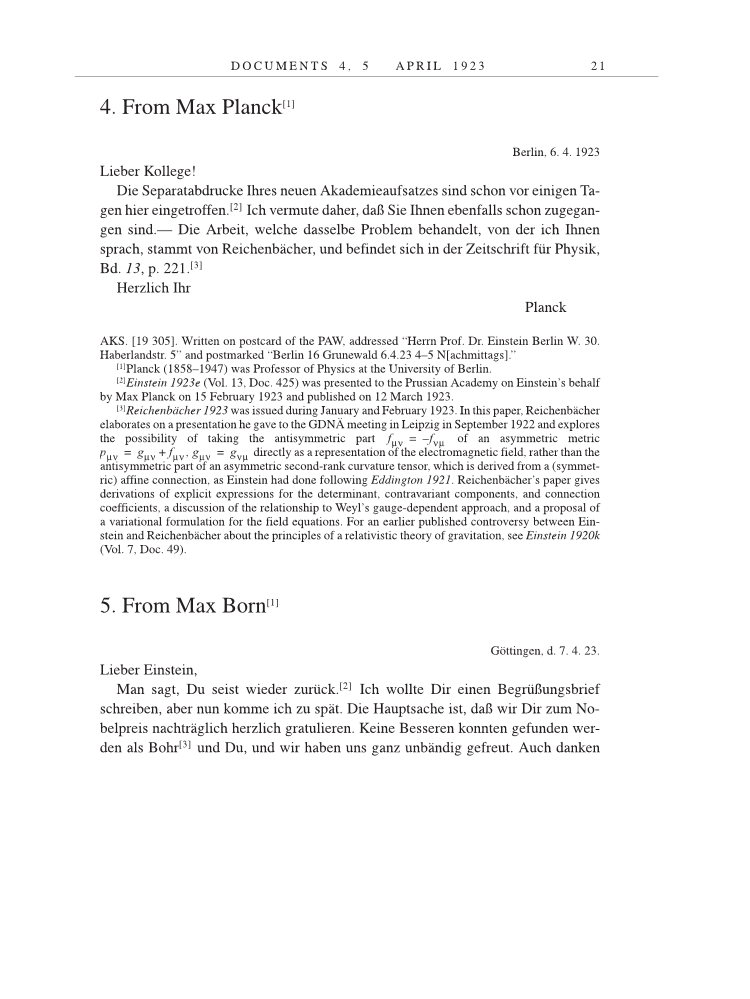D O C U M E N T S 4 , 5 A P R I L 1 9 2 3 2 1 4. From Max Planck[1] Berlin, 6. 4. 1923 Lieber Kollege! Die Separatabdrucke Ihres neuen Akademieaufsatzes sind schon vor einigen Ta- gen hier eingetroffen.[2] Ich vermute daher, daß Sie Ihnen ebenfalls schon zugegan- gen sind.— Die Arbeit, welche dasselbe Problem behandelt, von der ich Ihnen sprach, stammt von Reichenbächer, und befindet sich in der Zeitschrift für Physik, Bd. 13, p. 221.[3] Herzlich Ihr Planck AKS. [19 305]. Written on postcard of the PAW, addressed “Herrn Prof. Dr. Einstein Berlin W. 30. Haberlandstr. 5” and postmarked “Berlin 16 Grunewald 6.4.23 4–5 N[achmittags].” [1]Planck (1858–1947) was Professor of Physics at the University of Berlin. [2]Einstein 1923e (Vol. 13, Doc. 425) was presented to the Prussian Academy on Einstein’s behalf by Max Planck on 15 February 1923 and published on 12 March 1923. [3]Reichenbächer 1923 was issued during January and February 1923. In this paper, Reichenbächer elaborates on a presentation he gave to the GDNÄ meeting in Leipzig in September 1922 and explores the possibility of taking the antisymmetric part of an asymmetric metric , directly as a representation of the electromagnetic field, rather than the antisymmetric part of an asymmetric second-rank curvature tensor, which is derived from a (symmet- ric) affine connection, as Einstein had done following Eddington 1921. Reichenbächer’s paper gives derivations of explicit expressions for the determinant, contravariant components, and connection coefficients, a discussion of the relationship to Weyl’s gauge-dependent approach, and a proposal of a variational formulation for the field equations. For an earlier published controversy between Ein- stein and Reichenbächer about the principles of a relativistic theory of gravitation, see Einstein 1920k (Vol. 7, Doc. 49). 5. From Max Born[1] Göttingen, d. 7. 4. 23. Lieber Einstein, Man sagt, Du seist wieder zurück.[2] Ich wollte Dir einen Begrüßungsbrief schreiben, aber nun komme ich zu spät. Die Hauptsache ist, daß wir Dir zum No- belpreis nachträglich herzlich gratulieren. Keine Besseren konnten gefunden wer- den als Bohr[3] und Du, und wir haben uns ganz unbändig gefreut. Auch danken fμν fνμ –= pμν gμν fμν += gμν gνμ =
